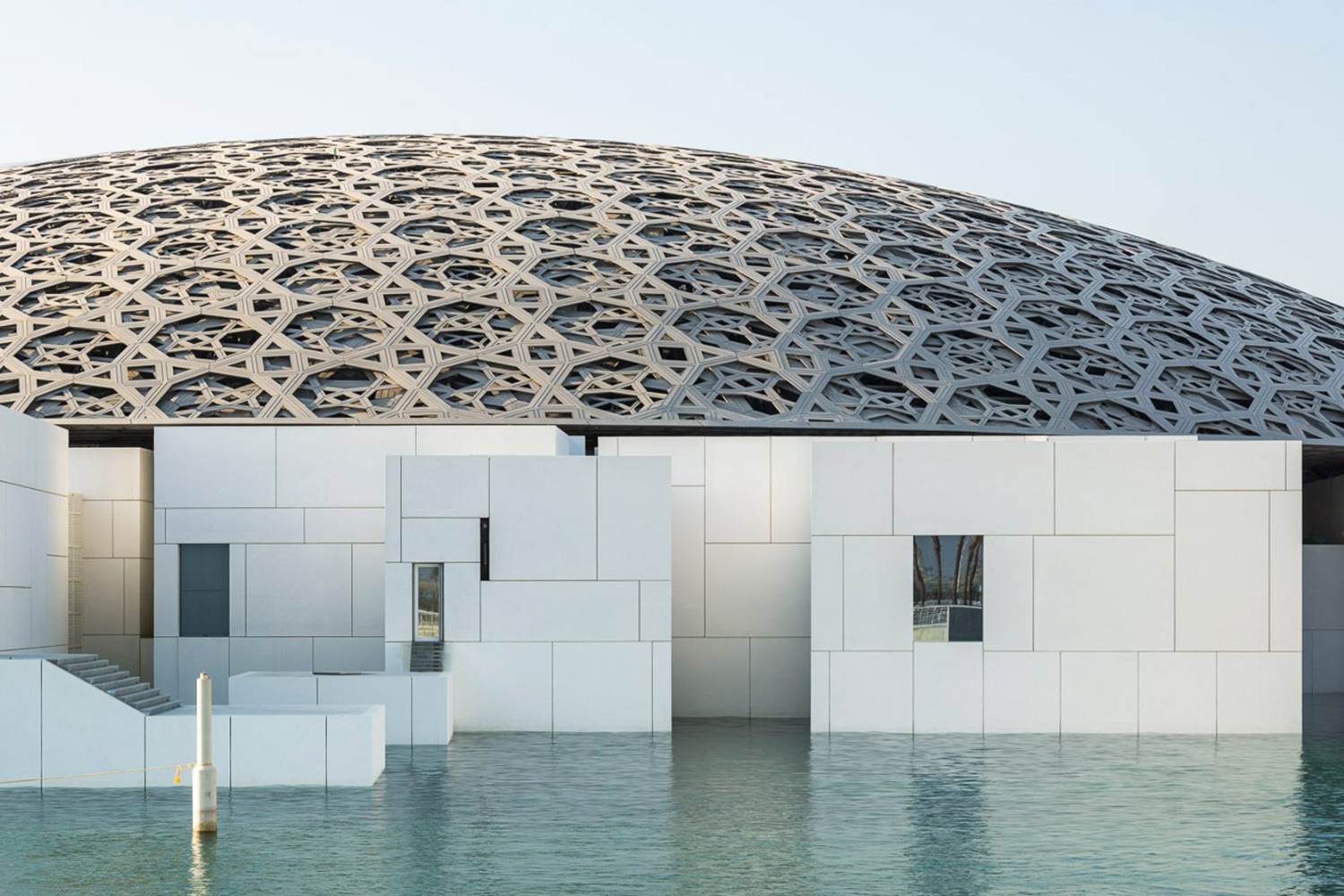Harnessing Water’s Aesthetic Power - Part II
From the Bauhaus era of architecture (1920s - 30s) on into the present day, the great modernist architects have often integrated water into their architectural designs. An earthy, ethereal element, water adds nature’s wildness and serene beauty to built environments, while enriching aesthetics and the felt experience. Its rippling softness can offset sharp edges and angles, and its mirror-like stillness complement and extend minimalist lines. Buildings reflected in water become amplified, their images doubled, extending beyond the limits of the ground, and when brought indoors, water can add the feeling that the outdoors are inside.
Ludwig Mies van der Rohe and Lilly Reich’s Barcelona Pavilion (originally called the German Pavilion) designed for Spain’s 1929 International Exhibition, was a groundbreaking minimalist modern design, commissioned by Germany’s Weimar Republic, which hoped to introduce a progressive post-WWI Germany to the world. Elegantly spacious and bare, the glass, steel, and stone construction was adorned only with richly patterned slabs of marble, travertine, and onyx, and two reflecting pools.
These pools of water amplify the calm that permeates the building, and become just one more sleek plane among the others, extending and mirroring the surrounding marble and stone (the original Pavilion was dismantled at the end of the International Exhibition in 1930, but was rebuilt again in 1986 by Catalan architects who relied on photos and drawings to recreate the design.).
Photo via onthegrid.city
Photo via architectuul.com
Photo via architectuul.com
Photo by Maciek Jeżyk of ONI Studio via ignant.com
Frank Lloyd Wright’s Fallingwater house in Pennsylvania, designed in 1935 (and today a UNESCO World Heritage Site), is a celebration of nature and modern design. The home cantilevers floating edges out over a cascading waterfall of river rapids in the Appalachian Plateaus and Mountains Bear Run Nature Reserve. Local sandstone and earth toned concrete in the materials echo the colors and textures of the landscape, while a staircase from the upper level leads straight down to the water’s edge. This indoor outdoor design built harmoniously around its existing natural site, most notably the incorporation of the lively wild river, exemplifies Wright’s philosophy of organic architecture, which seeks to create designs that coexist peacefully with their environments, rather than impose themselves upon them.
Photo via 52citiesblog.com
Photo Jon Fisher, CC BY-NC-ND 2.0 via khanacademy.org
Photo courtesy of Catherine Deacon via design.umn.edu
Photo via architecture-history.org
The John and Josephine Hagerty House in Cohasset, Massachusetts, built in 1938, was designed by Walter Gropius, the founder of the Bauhaus School (his first commission in the United States), and modernist architect Marcel Breuer. The home is a New England fishing village version of a Bauhaus modern, built to maximize views of the water, and floor to ceiling glass walls on two stories of the home bring the ocean views inside. The house is now on the National Register of Historic Places.
Photo via magazine.tablethotels.com
Photo via vitra.com
Photo via architecture-history.org
Richard Neutra’s Kaufmann House in Palm Springs, California, designed in 1946, was influential in kick starting the modernist Palm Springs aesthetic. Its flat roof lines and minimalist glass walled structure reflected in a cooling pool of water, were iconically captured by lifestyle photographer Slim Aarons’ in his 1970 photograph, “Poolside Gossip”.
Photo via omrania.com
Photo courtesy of Alamy via theguardian.com
Photo courtesy of Arcaid Images/Alamy via theguardian.com
Photo by Slim Aarons via houseandgarden.co.uk
John Lautner (a former apprentice and student of Frank Lloyd Wright), designed sleek, futuristic, modern homes that often feature an indoor outdoor design and natural elements brought inside.
At his Foster Carling House in Los Angeles, built in 1949, one entire wall of the living room opens up to hilltop views, while the backyard swimming pool reaches all the way inside, for fireside swims and soaks.
Photo via modernlivingla.com
His Sheats Goldstein Residence, built in 1963 near Beverly Hills, similarly opens up an entire wall of its great room to the swimming pool and views. Water is further incorporated into the design of the home with underwater pool windows in the primary bedroom. This house was featured in the Coen brothers’ 1998 film, The Big Lebowski, and is now pledged to the Los Angeles County Museum of Art (LACMA) by its current owner, James Goldstein.
Photo by Jeff Green via archdaily.com
Photo courtesy of James F. Goldstein via themanual.com
Lautner’s Elrod House, built in 1968 in Palm Springs, was featured in the 1971 James Bond film, Diamonds are Forever. Again opening up the interior of the home to the outdoors, expansive desert views and a curving swimming pool come right inside the central living space, for open air luxury indoor outdoor living.
Photo courtesy expointrealty.com via mrporter.com
His 25,000 sf Arango House / Marbrisa House (designed jointly with Helena Arahuete), built in Acapulco, Mexico in 1973, is wrapped in a weaving strip of water at the property’s edge. Together with the sweeping ocean views, this serpentine pool complements the home’s brutalist design.
Photo courtesy of John Lautner Estate, Julius Shulman, Sara Sackner via moderndesign.org
Pierre Koenig designed several Case Study Houses, iconic mid-century modern homes for Arts and Architecture magazine’s post WWII housing initiative that introduced affordable modern homes to the American public. Koenig’s 1959 Bailey House / Case Study House #21 in the Hollywood Hills is a simple open plan design with surrounding outdoor ponds. The water, which adds a weightless feeling to the home, also functioned as part of the internal evaporative cooling system. The minimalist mid-century style of the house became emblematic of California modernism, and today the home is a registered Los Angeles Historic-Cultural Monument.
Photo via dwell.com
Koenig’s 1960 Stahl House / Case Study House #22 high above Sunset Boulevard in the Hollywood Hills, further set the tone for the mid-century modern, postwar style of progressive, prosperous American family home. Its floor to ceiling glass walls, flat roof lines, crisp angles, and private swimming pool with panoramic views represented the covetable, breezy version of west coast living. The home is now on the National Register of Historic Places, and is also a Los Angeles Historic-Cultural Monument.
Photo via hwlk qoca.co
The last of Koenig’s designs ever built (the final blueprints were done by Koenig, but the project was finished posthumously by architect James Tyler after his death), was a luxury modern home on the beach in Malibu, California, completed in 2011. The luxury glass wall home is built right into the cliffs above the Pacific Ocean, and features ocean views through expanses of glass on every floor.
Photo courtesy of Compass via homesandgardens.com
Photo courtesy of Compass via homesandgardens.com
Photo courtesy of Compass via homesandgardens.com
Photo courtesy of Compass via homesandgardens.com
Oscar Niemeyer, an internationally recognized titan of 20th century modern design, celebrated nature’s sensuousness in his architecture. He often said the curves in his buildings were inspired by the curves of women, mountains, rivers, coastlines, and ocean waves, and when reflected in water, even the most wildly asymmetrical or boldly modern of his designs appear as graceful extensions of their environment.
Pictured from left to right are Niemeyer’s Palácio da Alvorada, 1958; National Congress, 1960; Itamaraty Palace, 1970; Mondadori Publishing headquarters, editorial offices, and newsrooms, 1975; and his pavilion at the Chateau La Coste Vineyard in Aix-en-Provence, France, 2022.
Photo by Rafa Neddermeyer Agência Brasil via otempo.com.br
Photo via architecturaldigest.com
Photo by Gonzalo Viramonte via divisare.com
Photo via guiding-architects.net
Photo via Stéphane Aboudaram; courtesy of WE ARE CONTENT(S) via galeriemagazine.com
Renowned modern architect Frank Gehry creates graceful, bold architectural designs that defy the limitations of modern materials, and appear as monumental sculptural structures. His Guggenheim Museum in Bilbao, Spain, opened in 1997, undulates in curves of shimmering titanium at the edge of the Nervion River, its avant-garde design reflected in the rippling water.
Photo via architectuul.com
Photo via dosde.com
Photo via dosde.com
Gehry’s Louis Vuitton Fondation museum, opened in the Bois de Boulogne forest in Paris, France in 2014, features 12 billowing sail-like glass wings. Standing in a pool of water filled by a cascading incline of steps, the building appears like a great lightweight ship sailing on the sea and sky.
Photo courtesy of Reuters via rfi.fr
Photo by Yves Marchand & Romain Meffre via bubblemania.fr
Photo via bubblemania.fr
French architect Jean Nouvel’s Louvre, Abu Dhabi, opened in 2017 on Saadiyat Island, Abu Dhabi, UAE, is a modern temple of minimalist white cubes that float on the turquoise waters of the Persian Gulf sea. Water is incorporated right into the design, lapping at the edges of the buildings, and filling indoor tidal pools in some of the galleries.
Photo by Luc Boegly / Sergio Grazia via dezeen.com
Photo courtesy Mohamed Somji via architecturaldigest.in
Nouvel’s 2019 National Museum of Qatar in Doha, a steel and concrete structure inspired by the wild organic shapes of desert rose crystals, spreads disc-like wings horizontally and vertically, like sundials at all angles. Perched at the edge of Doha Bay, the complicated shape, the color of desert sand, seems to rise from the singular plane of water.
Photo by James Merrell via elledecor.com
Stay tuned for part III of this blog, where we explore the aesthetic power of water in our own modern designs, coming soon!
Photos courtesy of theguardian.com, Reuters, architecturaldigest.com, architecturaldigest.in, elledecor.com, archdaily.com, dwell.com, dezeen.com, houseandgarden.co.uk, vitra.com, mrporter.com, Arcaid Images, Alamy, rfi.fr, homesandgardens.com, Slim Aarons, John Lautner Estate, Julius Shulman, James F. Goldstein, Mohamed Somji, Jeff Green, Luc Boegly, Sergio Grazia, James Merrell, Sara Sackner, Gonzalo Viramonte, moderndesign.org, divisare.com, Stéphane Aboudaram, WE ARE CONTENT(S), galeriemagazine.com, Compass, themanual.com, hwlk, qoca.co, expointrealty.com, modernlivingla.com, Maciek Jeżyk, ONI Studio, Rafa Neddermeyer, Agência Brasil, otempo.com.br, guiding-architects.net, architectuul.com, magazine.tablethotels.com, architecture-history.org, ignant.com, onthegrid.city, 52citiesblog.com, Catherine Deacon, design.umn.edu, Jon Fisher, CC BY-NC-ND 2.0, khanacademy.org, omrania.com, dosde.com, Yves Marchand, Romain Meffre, and bubblemania.fr.








































